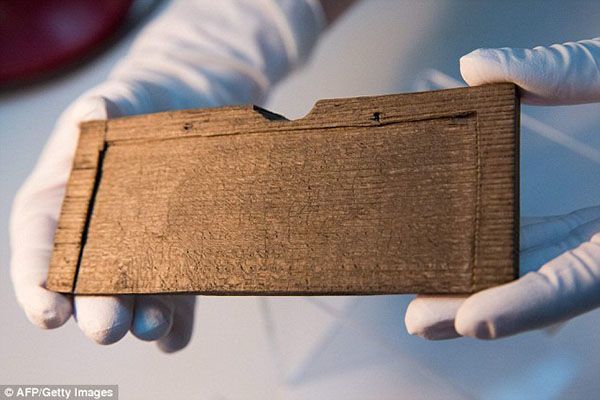Earliest handwritten 'notepad' unearthed in London: Discovery of 410 wooden tablets gives glimpse into life of city's first Romans
Some 410 wooden tablets which were used by the Romans like paper for note-taking, accounts, correspondence and legal documents, have been discovered in Central London, 87 of which have been deciphered to reveal names, events, business and legal dealings and evidence of someone practicing writing the alphabet and numerals.
While wood rarely survives when buried in the ground, the tablets were preserved in the wet mud of the Walbrook, which dominated the area in Roman times but is now one of London's many buried rivers.
Recesses in the rectangular tablets would originally be filled with beeswax blackened with soot. This would have been written in using a stylus, and while the wax has not survived, the writing sometimes went on to the wood and can be deciphered.
Deciphering the tablets has revealed they include the earliest dated handwritten document in Britain, a financial record with the date of 8 January, 57 AD. There is also one containing the earliest ever reference to London in around 65-80 AD, 50 years before Roman historian Tacitus cites the city in his Annals.
More than 700 artefacts from the excavation will go on display next year, including the earliest dated writing tablet.
 Earliest handwritten 'notepad' unearthed in London: Discovery of 410 wooden tablets gives glimpse into life of city's first Romans
Earliest handwritten 'notepad' unearthed in London: Discovery of 410 wooden tablets gives glimpse into life of city's first RomansSource: www.dailymail.co.uk



